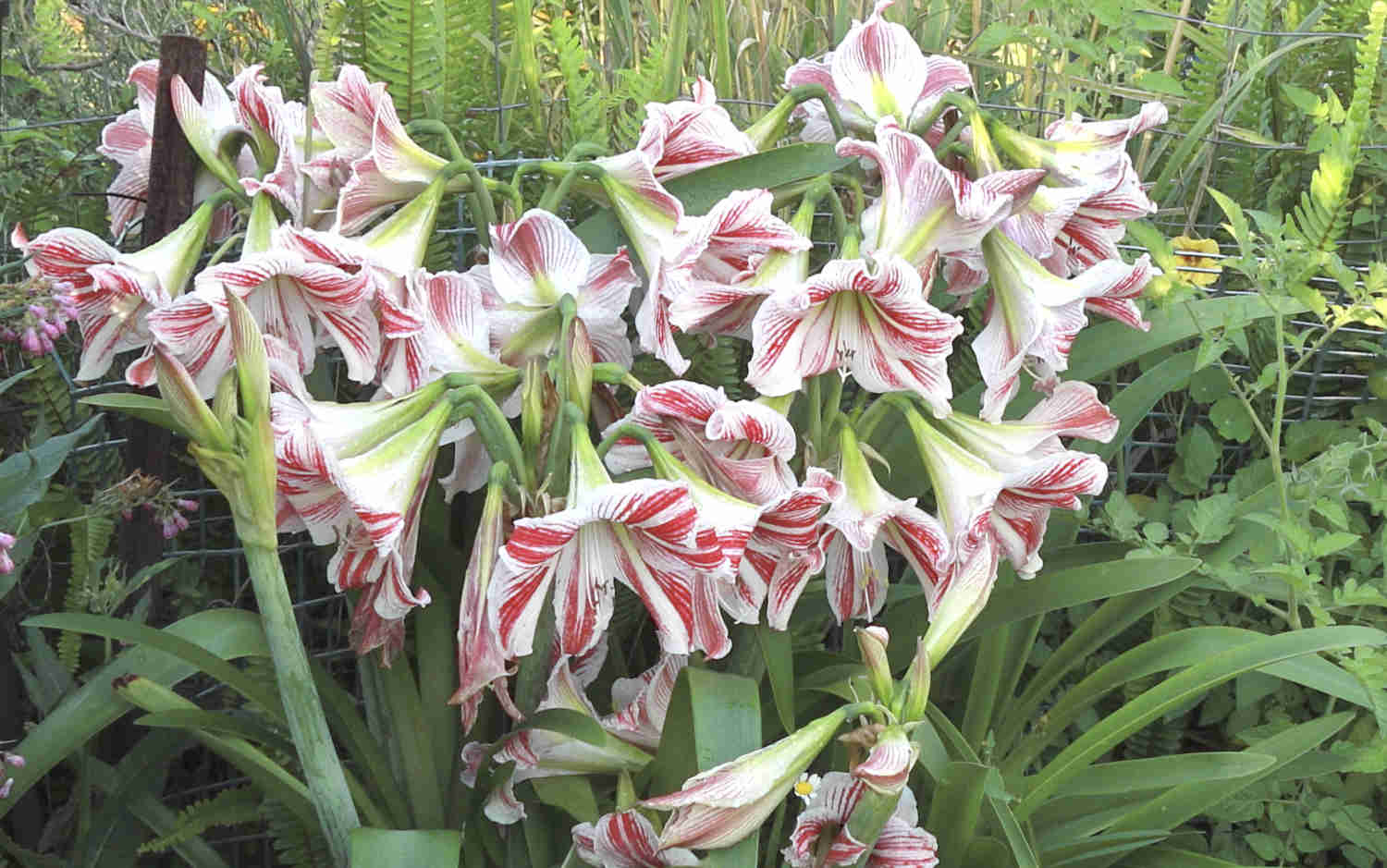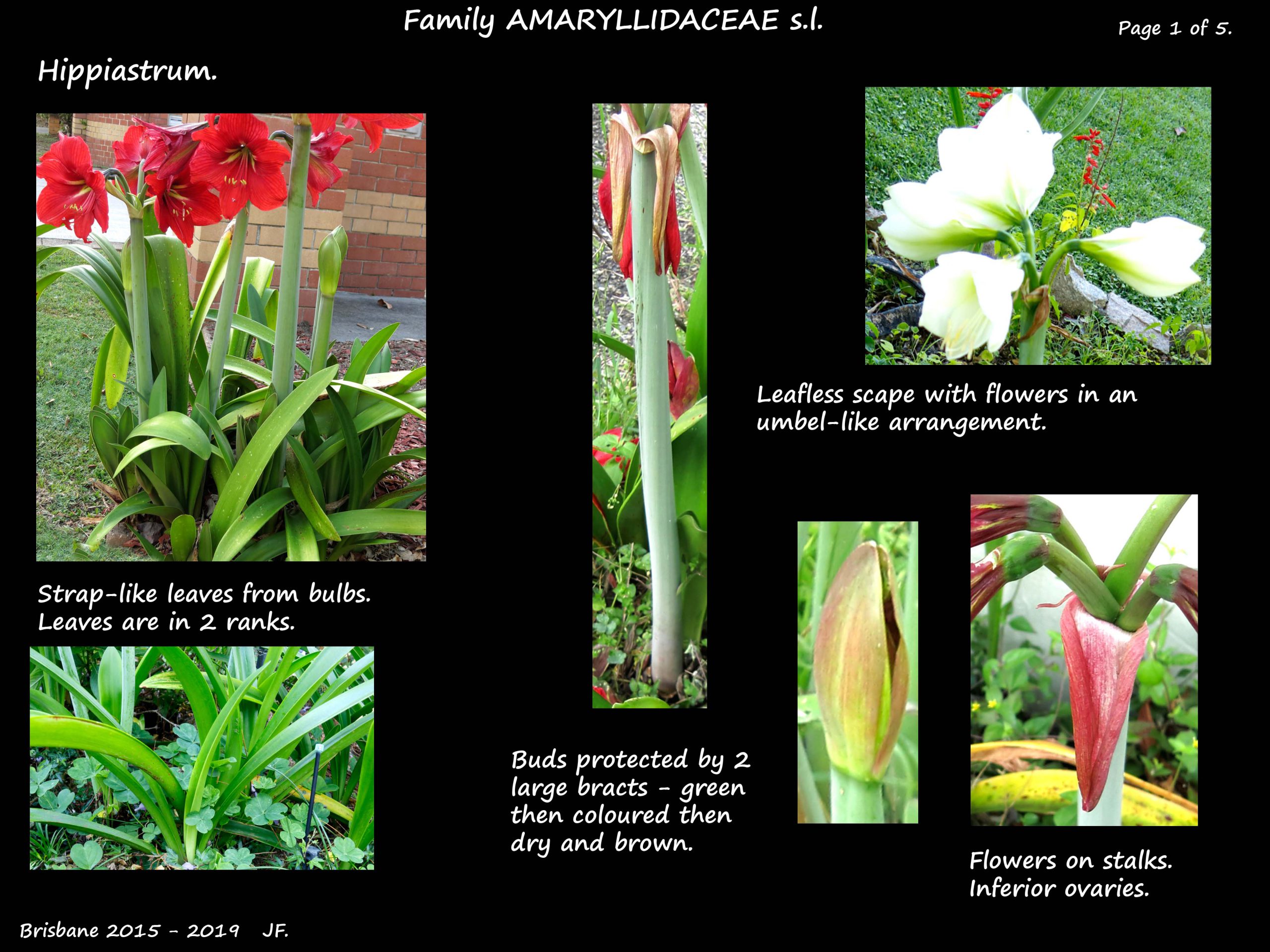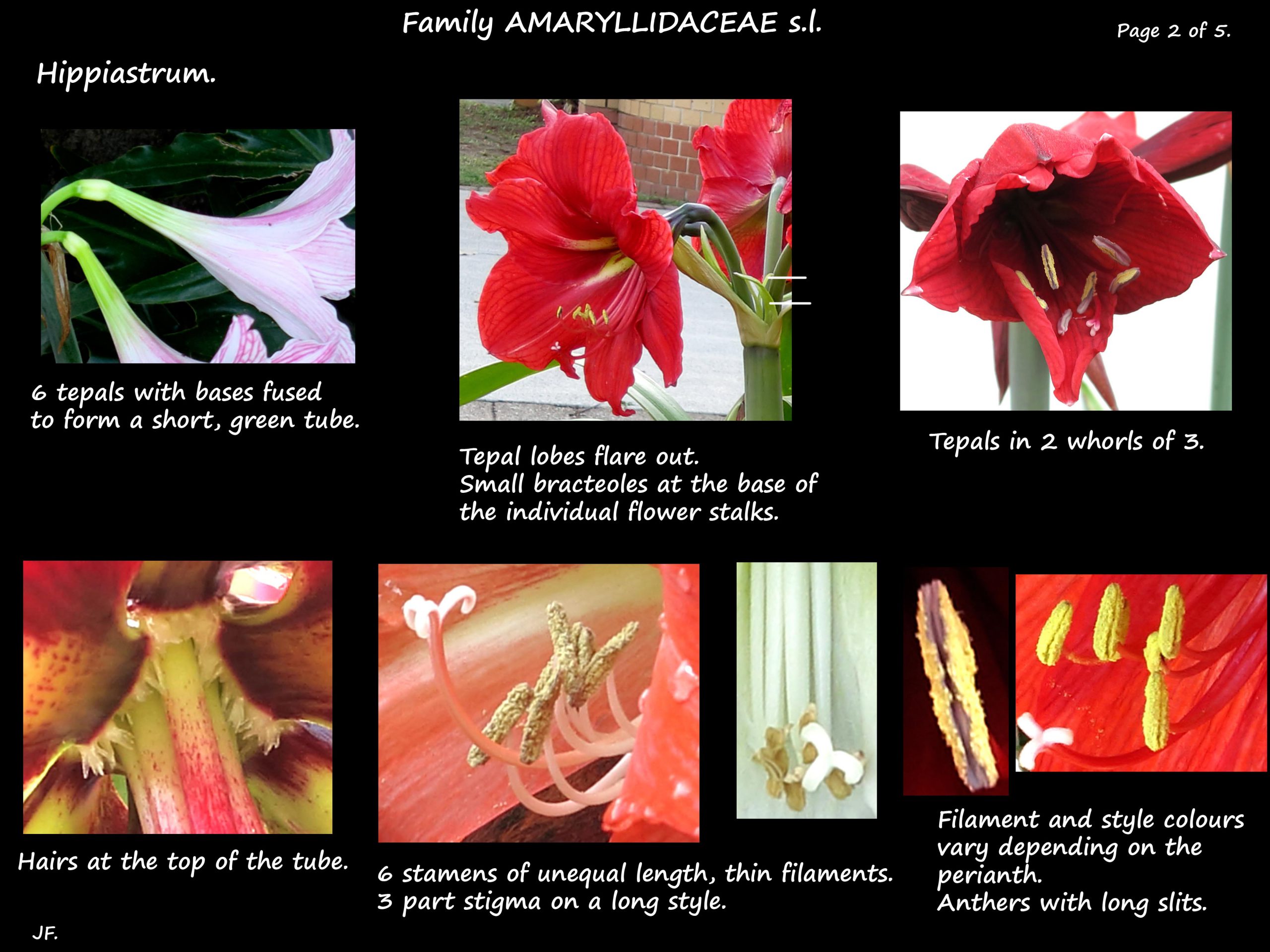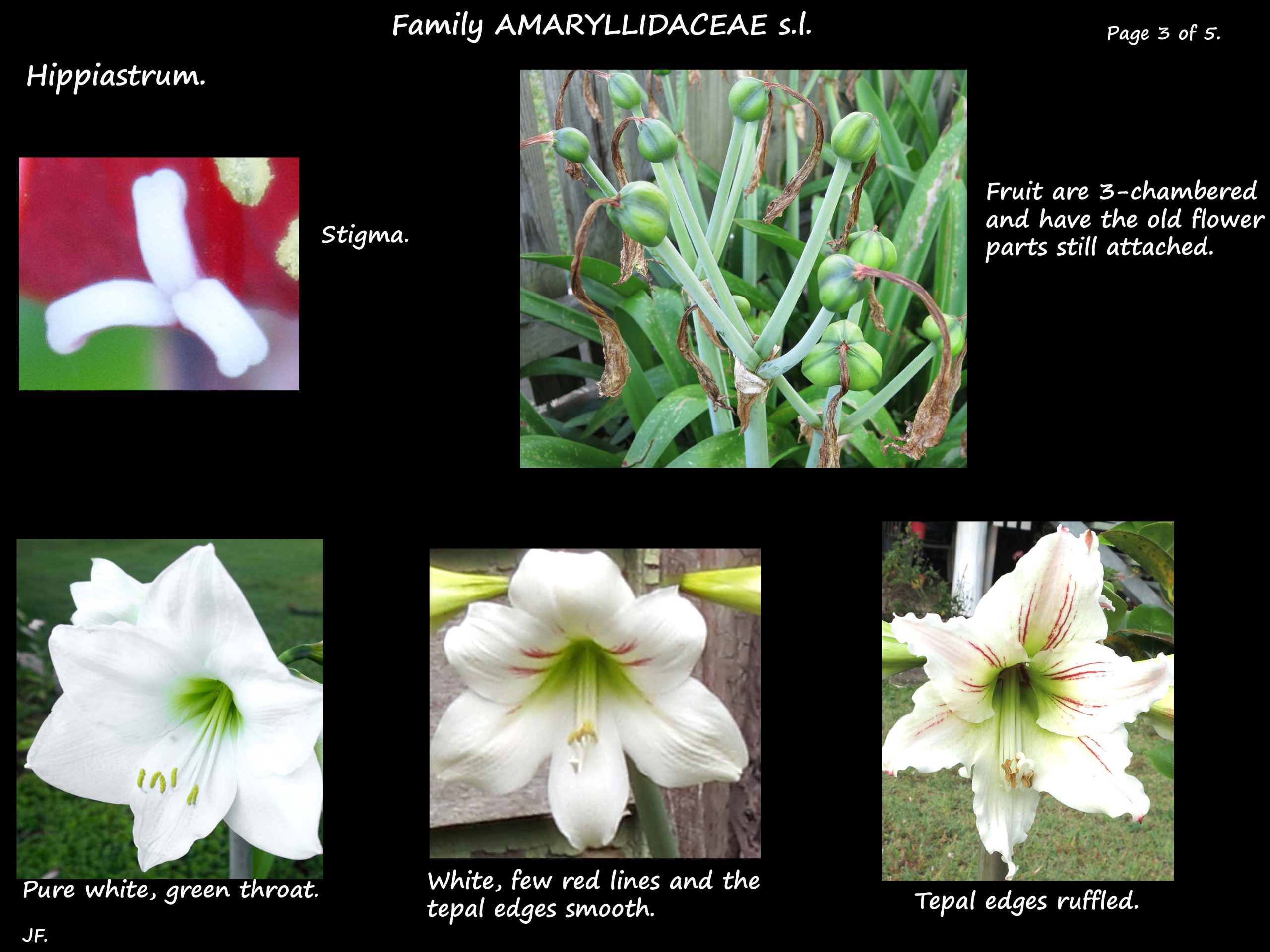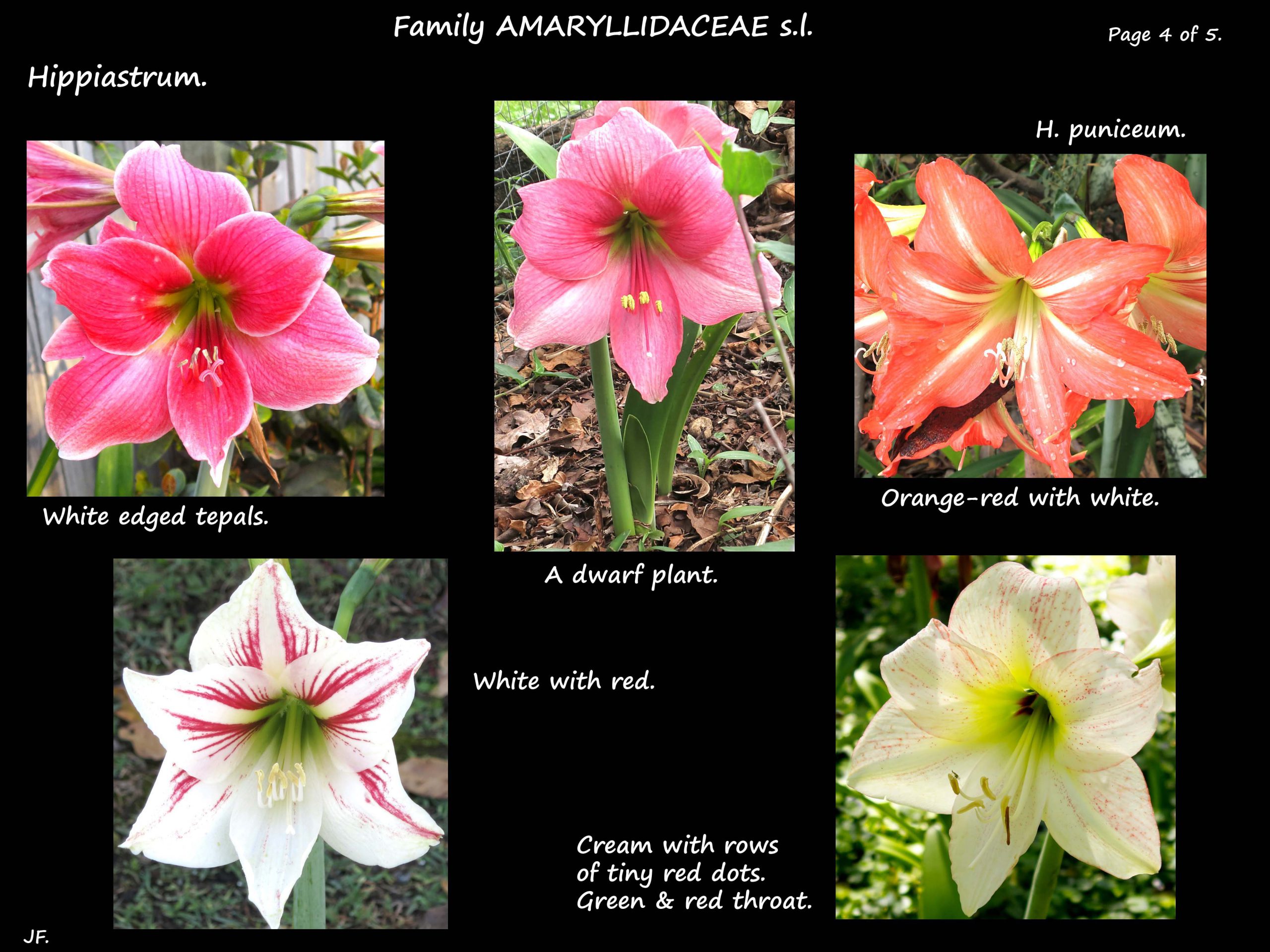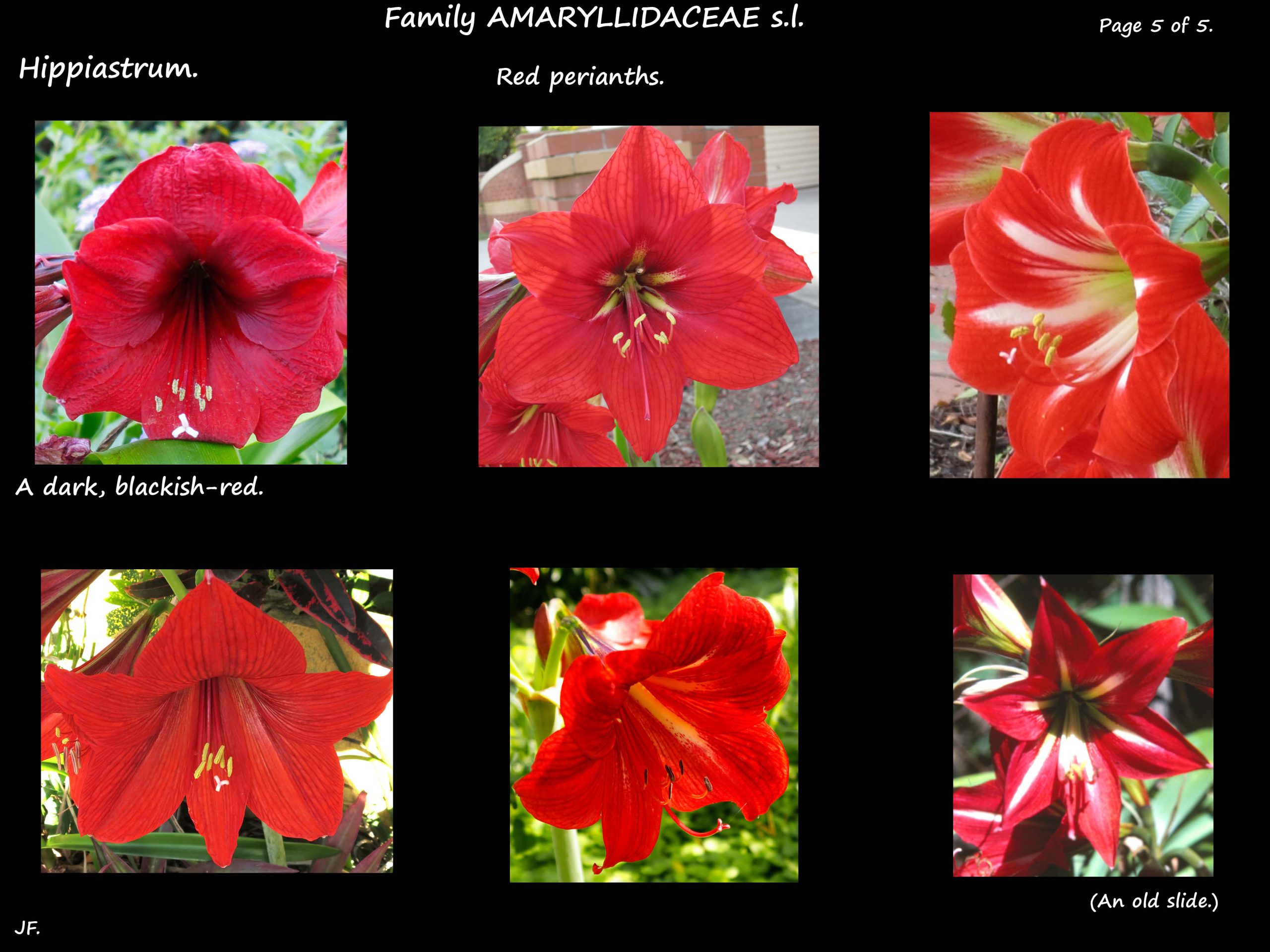Hippeastrum.
Family Amaryllidaceae s.l. > Subfamily Amaryllidoideae > Subtribe Hippeastrinae.
There are about 90 species and over 600 hybrids and cultivars.
Many of the plants sold as Amaryllis are actually Hippiastrums as the flowers are similar.
The flower stalk in Amaryllis is solid while Hippiastrums have a hollow one.
Perennial, evergreen plants but can be deciduous in certain climates.
The fleshy bulbs are up to 12 cm across and have an outer protective layer.
Up to 7 strap-like leaves that are up to 60 cm long and 5 cm wide.
Inflorescence stalks are straight and hollow.
They are up to 90 cm high so the flowers are held above the leaves.
At the top of the stalk are 1 to 7 flowers.
The developing buds are protected by 2 large bracts.
The bisexual, funnel-shaped flowers, on stalks, are large and showy.
There are 6 tepals in 2 whorls that may or may not be similar.
Their bases are fused to form a short tube.
At the top of the tube, inside, there is often a small ridge or short hairs.
The lobes are flared up to 20 or 25 cm across.
Flowers, including hybrids, are red, white, pink or nearly orange.
They can be striped or have a frilled edge.
The 6 stamens, of unequal lengths, have thin filaments.
The anthers are dorsifixed and free to move (versatile).
The inferior ovary has 3 locules.
The single style has a 3 part stigma.
The fruit is a loculicidal capsule.
The black or brown seeds can be spherical or flat with wings.
Hybrids and cultivars offer a huge range of sizes, flower shapes and colours.
There are dwarf plants, double flowers and some with more flowers.
Colours include shades of red, pink and purple, yellow and orange or green.
Patterns and edges also vary.
J.F.
